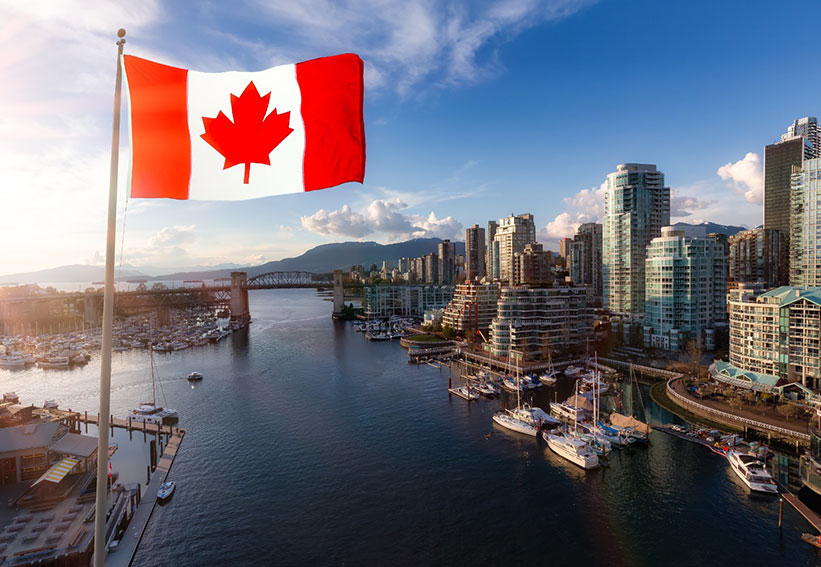
IRCC Prioritizes In-Canada Applicants in New 2026–2028 Immigration Levels Plan
The Government of Canada has reaffirmed its commitment to providing permanent residence (PR) opportunities to individuals who are already living, studying, or working within the country. Despite the absence of a specific “In-Canada focus” category in the newly released 2026–2028 Immigration Levels Plan, the Immigration, Refugees and Citizenship Canada (IRCC) has made it clear that temporary residents will remain a top priority in the coming years.
Minister Reaffirms Priority for Temporary Residents
During a recent media address, Immigration Minister Lena Diab emphasized that the department would continue to “give priority for permanent residence to temporary residents already living and settled in Canada.”
This policy aims to help Canada manage population growth and housing pressures by stabilizing immigration numbers while recognizing the valuable contributions of those already integrated into the Canadian economy.
The new plan explicitly states that IRCC will set immigration targets “in tandem with both temporary and permanent resident streams”, with a strong focus on transitioning temporary residents to permanent status—especially those who possess the skills, education, and work experience that Canada urgently needs.
High Express Entry Targets Remain a Core Strategy
Although total Express Entry targets will slightly decline from 124,680 in 2025 to 109,000 in 2026, IRCC has ensured that this flagship system continues to be a key pathway for in-Canada applicants, particularly under the Canadian Experience Class (CEC) stream.
From 2027 onward, the federal government plans to stabilize Express Entry admissions at 111,000 per year, maintaining strong numbers for economic immigrants.
CEC candidates, who already have Canadian work experience, are seen as prime contributors to the labour market and community development. Many industry observers believe that this could lead to the return of larger CEC draws in 2026, aligning with IRCC’s policy of favouring applicants who have proven their ability to integrate successfully.
Notably, 64% of Canada’s 2026 PR admissions will fall under economic immigration categories, reinforcing the federal strategy to attract and retain skilled workers.
Provincial Nominee Program Targets Surge Significantly
One of the most impactful changes in the new plan is the 66% increase in Provincial Nominee Program (PNP) targets, rising from 55,000 in 2025 to 91,500 in 2026. The target will increase again to 92,500 in both 2027 and 2028, giving provinces and territories greater autonomy to select candidates who are already contributing to local economies.
This move is expected to particularly benefit international graduates, skilled workers, and temporary foreign workers currently residing in Canada.
Many provinces have already been following IRCC guidance that at least 75% of nominees be in-Canada candidates, minimizing new arrivals and maximizing retention of those already contributing economically.
The increased allocation signals a strong partnership between Ottawa and the provinces to support regional labour market needs and improve settlement outcomes for newcomers.
One-Time Immigration Policies for 2026 and 2027
To accelerate the transition of temporary residents into permanent residents, IRCC announced two special, one-time initiatives:
1. Fast-Track PR for Skilled Workers
Over 33,000 skilled workers already employed in Canada will receive expedited permanent residency between 2026 and 2027.
This initiative focuses on individuals working in high-demand and rural sectors, rewarding those who have maintained steady employment, community involvement, and tax contributions.
2. PR Pathway for Protected Persons
IRCC also plans to grant PR to 115,000 Protected Persons — individuals recognized as refugees or those requiring protection under international law.
This initiative seeks to integrate long-term residents into Canadian society, enabling them to build stable futures and contribute to the economy while upholding Canada’s humanitarian commitments.
These two special programs are separate from regular PR admission targets, reflecting Canada’s evolving approach to meet both economic and humanitarian goals through domestic transitions.
Canada’s Balanced Approach to Immigration
With the 2026–2028 Levels Plan, Canada continues to refine its immigration strategy — balancing economic growth, labour market stability, and responsible population management.
By maintaining strong Express Entry and PNP numbers while facilitating smoother transitions for those already in the country, IRCC aims to create a more sustainable and inclusive immigration framework that supports both newcomers and Canadian communities.
For a consultation about Immigration options, reach out to the CAD IMMIGRATION today!





